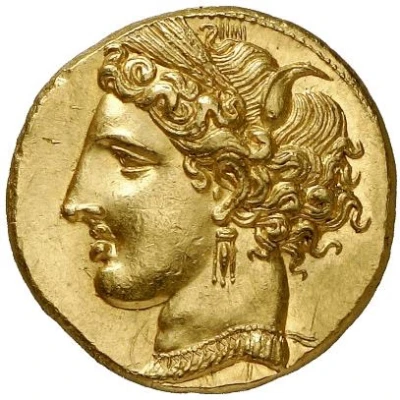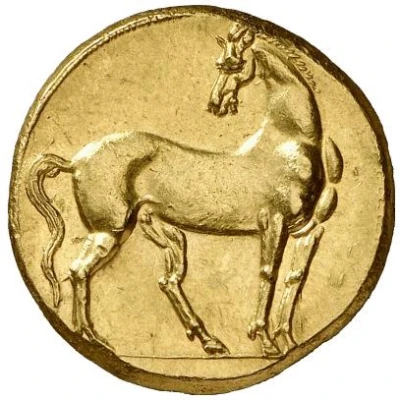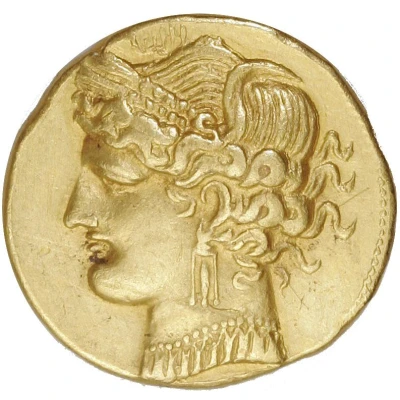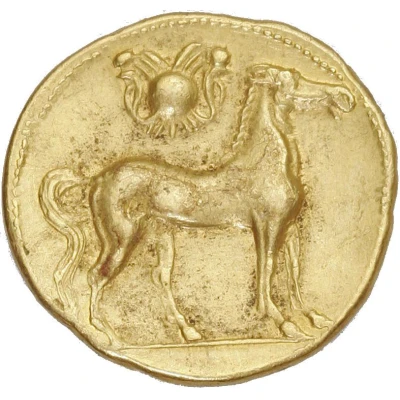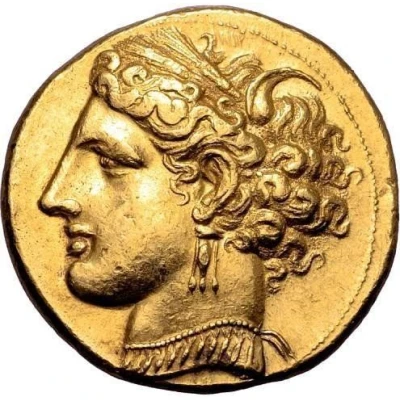
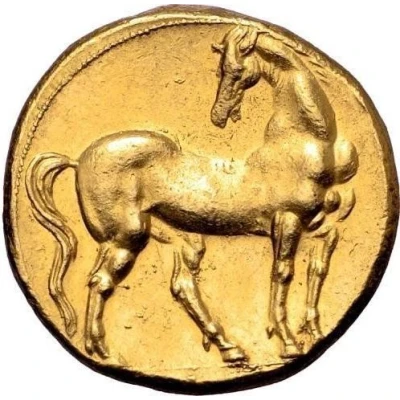

© Roma Numismatics Limited
Trihemistater 270 BC - 264 BC
| Gold | 12.53 g | 22 mm |
| Issuer | Carthage (Zeugitana) |
|---|---|
| Type | Standard circulation coin |
| Years | 270 BC - 264 BC |
| Value | Gold Trihemistater (18) |
| Currency | Shekel |
| Composition | Gold |
| Weight | 12.53 g |
| Diameter | 22 mm |
| Shape | Round (irregular) |
| Technique | Hammered |
| Demonetized | Yes |
| Updated | 2024-10-09 |
| Numista | N#324403 |
|---|---|
| Rarity index | 100% |
Reverse
Horse standing right, looking back; four pellets along exergual line.
Interesting fact
The Trihemistater coin was used as a form of currency in the ancient city of Carthage, which was located in present-day Tunisia. The coin's name, "Trihemistater," means "three-and-a-half shekels" in Greek, which was the currency's value in the ancient Greek system. Despite being made of gold, the coin was not used as a symbol of wealth or status, but rather as a practical means of exchange for everyday transactions. Its value was equivalent to the daily wage of a skilled worker, making it a versatile and accessible form of currency for the average person.
